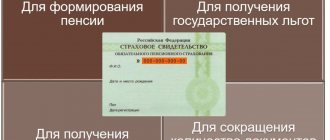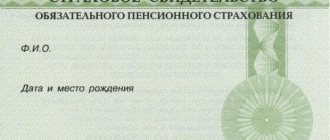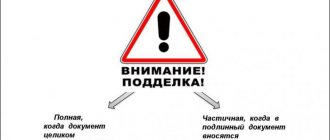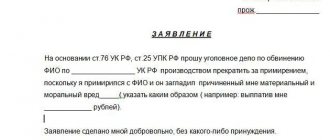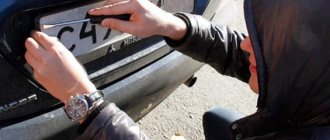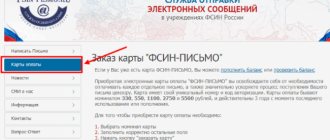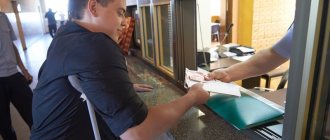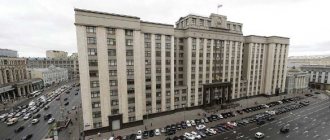On Russian roads, situations quite often occur when traffic police officers slow down a vehicle and it turns out that the driver has fake documents. The bulk of documents today are implemented via the World Wide Web. They are made quite poorly, so it can be quite easy to figure them out. If the police have any doubts, then they simply check the driver's license against the database. But in some cases, criminals use a real driver's license (for example, a lost or stolen one). Fraudsters simply replace the photograph. When checking, there is no photograph of the driver in the database. Is it possible to forge a driver’s license yourself and what methods and methods do scammers use to forge licenses? What is the penalty for forging a driver's license? We will answer these questions in this article.
Who buys a fake driver's license?
In fact, anyone can buy a fake peel, since scammers provide these services via the Internet. But the following categories of the population are considered potential consumers of illegal goods:
- Minors aged 14 to 18 years (a common type of document is a license for mopeds, ATVs, and other motor vehicles);
- Persons deprived of a driver's license (for driving while intoxicated, leaving the scene of an accident or other violations);
- People who do not have the desire or means to attend full-fledged theoretical and practical training courses at a driving school;
- Citizens with health problems;
- Persons registered with a narcologist (if there is an official doctor’s report);
- Criminals who hide their real name (this category also includes persons wanted because of loan or alimony debts).
In most cases, people use fake licenses of poor quality, which even an inexperienced patrol officer can understand. But there are also fakes that are very difficult to distinguish from a real sample.
Content
- Prohibiting
- Warning
- Priority signs
- Mandatory signs
- Signs of special regulations
- Information signs
- Service marks
- Signs with additional information
Road signs vary in shape and color. This way you can distinguish their type. Each group includes signs that are similar in meaning.
There are 8 types of road signs in total:
- prohibiting;
- warning;
- priority signs;
- prescriptive;
- special instructions;
- informational;
- service;
- with additional information.
Let's look at how some differ from others, and what signs are included in each group.
Options for falsifying driving documents
There are two main forms of linden crusts: complete and partial. In accordance with Article 327 of the Criminal Code of the Russian Federation, any forgery of a driver's license will be considered an equally serious offense for which one must be held accountable. Therefore, it is clearly not worth counting on a more lenient sentence in any of the cases.
Complete fake
Complete forgery of a driver's license consists of creating a false document, starting from the cover itself and ending with the data entered into it. Namely:
- Full name of the customer, date of birth, place of registration and photograph;
- Name of the authority responsible for issuing driving licenses;
- Stamps and signatures.
Typically, this form of falsification is used for certificates and forms at the state level, since international papers undergo a thorough check. If a counterfeit is discovered at foreign points, you will not be able to get away with a fine. But inside the country, IDs are often simply briefly examined, and not always at close range.
Partial fake
A partial fake driver's license is much more difficult to detect than a full fake one, since only one of the elements changes. The crust itself, seals and signatures remain real, which is why any superficial check will not pose any threat. Such falsification can be determined in the following ways:
- Using infrared rays or under ultraviolet light (suitable for certificates altered by mechanical removal of individual graphic elements);
- Under high magnification, with the simultaneous use of light filters (helps to recognize crusts that have undergone chemical etching of text);
- Detailed comparison of a fake ID with a government-issued ID to determine if it contains inappropriate letter angles, misaligned stamps, or incorrectly scaled photographs.
In order to send a suspect's IC for examination, the inspector must have an ironclad foundation. Otherwise, the driver may sue the traffic cop for abuse of power.
Document forgery methods
A fake driver's license is considered to be any state-sanctioned attempt to create a document outside the special workshops of the State Traffic Safety Inspectorate. Only this organization has the right to create special forms, which are an official document that allows you to drive a vehicle. Modern driver's licenses have a fairly high level of security (watermarks, the inscription “RUS” on paper, which is visible only under an ultraviolet lamp, the presence of microtext, etc.), so their complete counterfeit is virtually impossible.
Fraudsters most often use partial counterfeiting, that is, they re-paste photographs with valid licenses, forge stamps or serial numbers. In addition, urgent licenses can be produced, which are entered into the traffic police database; a duplicate of these rights can be produced, but with the data of another citizen. It is common to deceive people using a phone call from an intermediary company. She produces a real ID, providing the client with the serial number of the document, as well as the contact information of the “traffic police officer”, who must subsequently enter this document into the database. Of course, such a certificate is a fake and no one will enter it into any database.
How to distinguish fake licenses from real ones
In most situations, drivers purchase fake licenses for cars, motorcycles, tractors and other vehicles for a very modest amount, which also affects the quality of the falsified document. Therefore, inspectors can check the authenticity of rights by visual signs, such as:
- The material of the driver's license differs to the touch (even if the driver does not give his license to the traffic police officers, MREO specialists will be able to detect such a discrepancy at the first State Technical Supervision);
- The presence of pronounced abrasions on the text, where freshly applied letters are clearly visible;
- A crookedly pasted photo (can only be seen on old-style Russian ID cards);
- Poorly printed lines, above or below the specified line (those people who order the cheapest counterfeit options may also experience noticeable bevels in the text);
- A different shade of the ID or background on the driver’s image (on the original documents there is only a red background);
- On the date of issue of the travel document, the month is written in words, not numbers;
- Not all categories are available on the back of the ID (there should be 14 on the old model and 16 on the new one), or there are errors in the table.
It is very easy to catch a fraudster based on such visual errors. But in the lion's share of cases, motorists pay off the inspector with a decent bribe, and no criminal case is initiated for falsification of the driver's license.
Priority signs
These road signs explain who should be the first to cross a road intersection or other difficult section of the road. Violation of such a sign at intersections will result in a fine of 1,000–1,500 rubles.
Signs explaining priority are made in different shapes and colors. They do not obey the general typing rule. For example, the sign with the main road is made in the form of a yellow diamond with a white edge, and the “Give way” sign is an inverted white triangle with a red edge.
Priority signs also include signs warning the driver about approaching an intersection with a secondary road, signs regulating the priority of passing a narrow path, etc.
Also read: Secrets to successfully passing the theory exam at the traffic police
Punishment for using counterfeit
Many drivers believe that driving with a linden peel can be completely calm. But according to the legislation of the Russian Federation, the use of false documents, as well as the forgery of rights itself, is punishable in accordance with the code.
Thus, using a non-original driver’s license or registration card, the motorist is subject to the following sanctions:
- A fine of 40 to 80 thousand rubles (depending on how many times a citizen is caught with a fake driver’s license, the amount of the fine can increase significantly);
- Forced labor for a period of 1.5-2 years (according to Article 327 Part 3 of the Criminal Code of the Russian Federation, this penalty is applied to persons who are unable to pay debts to executive bodies);
- Partial restriction of freedom (an extreme alternative that comes into force subject to long-term evasion of paying a fine).
Based on this, it turns out that you can also get punished for using fake licenses.
Therefore, when issuing your next driver’s license, it is better to check it yourself to ensure it is properly formatted. If the certificate differs from the generally accepted requirements, the motorist needs to urgently contact the local traffic police department to solve this problem (during the period of replacement of the driving license, the driver can use a temporary permit).
How to spot a fake
To understand that this is a real and a fake driver's license, you need a magnifying glass, a real driver's license, or ultraviolet light . A magnifying glass will help you examine your ID in detail. The paper should be thicker, with special inclusions. Under ultraviolet light you can see special watermarks that are on real documents.
How to check a document for authenticity
To recognize a fake, the following signs were identified:
- The date should be positioned as follows: dd.mm.yyyy. If your driver’s license says: dd.mm.yy., then this is a fake.
- On a fake, the background of the photo can be blue, white or some other color; on a real document, the background is only red.
- If font poorly printed or the letters are beveled, then this is a fake.
Pay attention to the font - New data has been added to the erased text
- Information about categories recorded with errors. It may also not be located on the back side where it should be.
Information about the document must be entered into the traffic police database
Responsibility for the production and marketing of rights
We have looked at what it would be like to drive with a fake license, and in conclusion, let’s find out what threatens manufacturers of illegal products. If we rely on the Criminal Code of the Russian Federation (Article 327), then it provides for punishment in the form of arrest for a period of 6 months to 4 years. But in practice, the legal authority can limit itself only to forced labor and a fine of 80 thousand rubles.
It is strongly not recommended to engage in fraud or use fake certificates of a driver, driver or anyone else. After all, being deprived of freedom for several years is not a pleasant prospect. And having a criminal record, in the future there will be many more problems both with employment and with other sectors of life.
Responsibility under the Code of Administrative Offenses
Driving a car or other vehicle with a false license is equivalent to driving without any documents at all.
Thus, an unscrupulous driver will have to bear administrative liability for an offense:
- if the owner of the fake documents never had a real driver’s license, the court may impose a fine for fake licenses in the amount of 5,000 - 15,000 rubles;
- If the owner of a false license was previously deprived of the right to drive a car, he faces a fine of 30 thousand rubles, arrest for 15 days, or forced labor (100 - 200 hours).
If a traffic police officer finds false documents on the driver, he is obliged to detain him until the circumstances are determined, and send the vehicle to a impound area.
In this case, the driver will then have to pay a considerable amount to return his car back.
So, a fake driver's license can bring a lot of problems to its owner. Of course, dishonest sellers can assure that the driver’s licenses they produce are registered in the traffic police database, but a prudent driver will never commit an obvious offense.
All the same, the truth will be revealed over time, and you will have to pay dearly for it - the dishonest motorist will be prosecuted.
Mandatory signs
As a rule, prescriptive signs are made in the shape of a circle. Pictograms are most often depicted on a dark blue background. They allow traffic: “arrows” before crossing roads, a sign indicating the entrance to a roundabout, signs indicating pedestrian or bicycle paths.
Prescriptive signs do not impose restrictions, but, on the contrary, require the performance of a specific maneuver: they show the direction, speed and type of transport that can continue moving.
Also read: How to learn to drive a car from scratch
Checking the authenticity of a driver's license online
To verify the authenticity of a driver’s license, we will use the service on the official website of the traffic police:
The form to fill out is extremely simple:
- In the first field, enter the series and number of your driver's license without spaces.
- In the second field, enter the date the certificate was issued.
- Click on the "request review" link.
Note. The form does not work in all browsers (programs for viewing Internet sites). So if after clicking the “request review” button nothing happens on the screen, use a different browser.
Service marks
Service markers show where the nearest service station, gas station or rest area is located. Within the city they are installed directly next to the object, and on highways - from 400 m to several tens of kilometers. There are also signs indicating gas stations with sockets for electric cars.
Also read: Traffic controller signals in simple language
Signs of special regulations
Markers with special requirements combine several types of signs – informational and permitted. Pedestrian crossing signs show where pedestrians can cross the road, and where drivers need to slow down and be especially careful. This category also includes highway exit signs, public transport-only zones and public transport stops.
All signs are square or rectangular in shape and may be blue (arrows, reversing or one-way traffic), green (motorway entrances) and white (special restricted areas).
Also read: List of mistakes in the city and penalty points for them
Information signs
Information signs include blue squares indicating permitted turns, a parking sign, underground pedestrian crossings, signs indicating dead ends, traffic patterns, etc. In addition, these are also signs with the names of cities, villages and streets. In cities they are made in black letters on a white background, on highways - white letters on blue, and on highways - white on green.
Also read: Rules for retaking the traffic police exam
